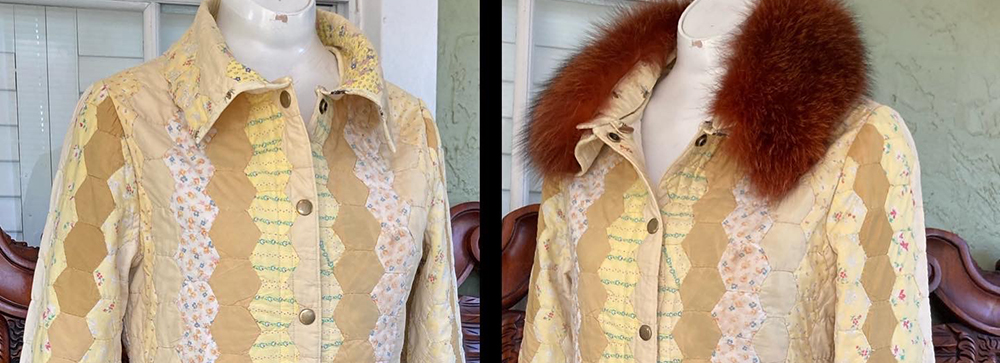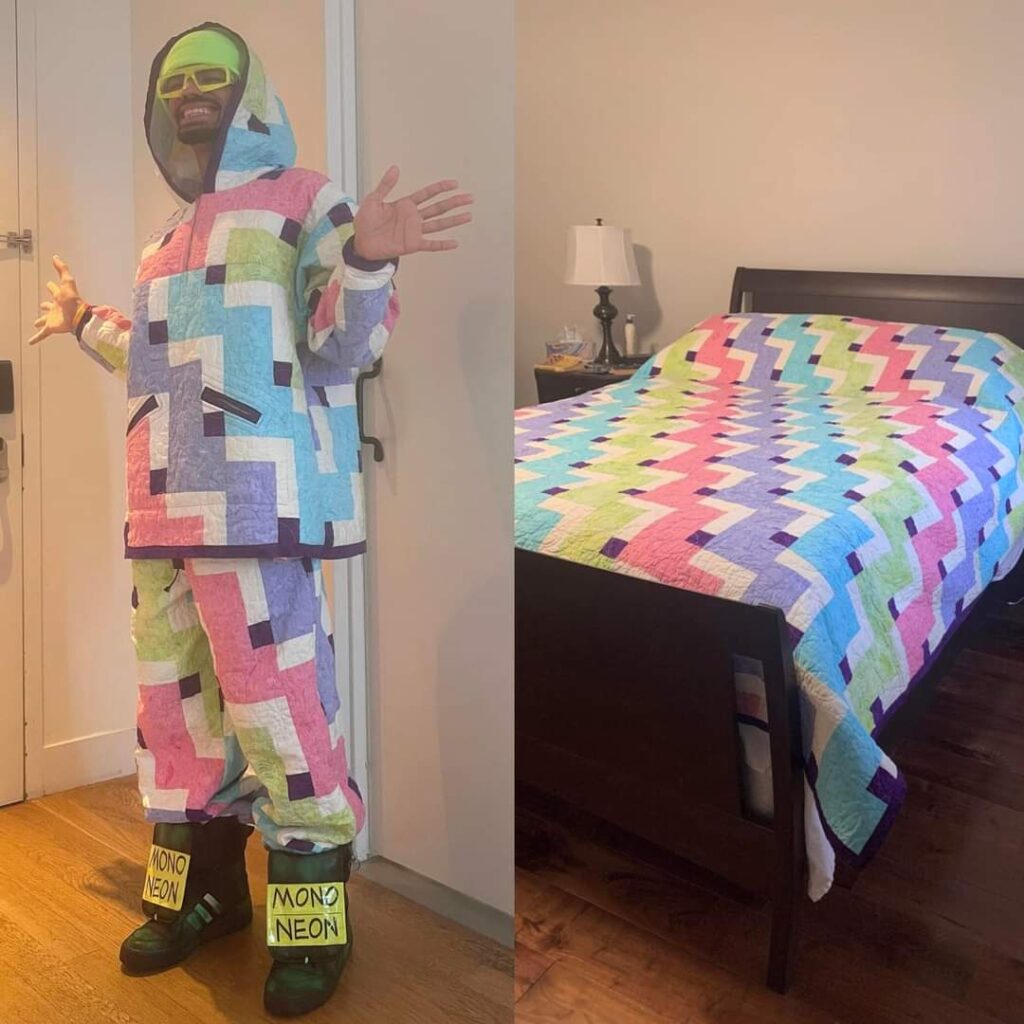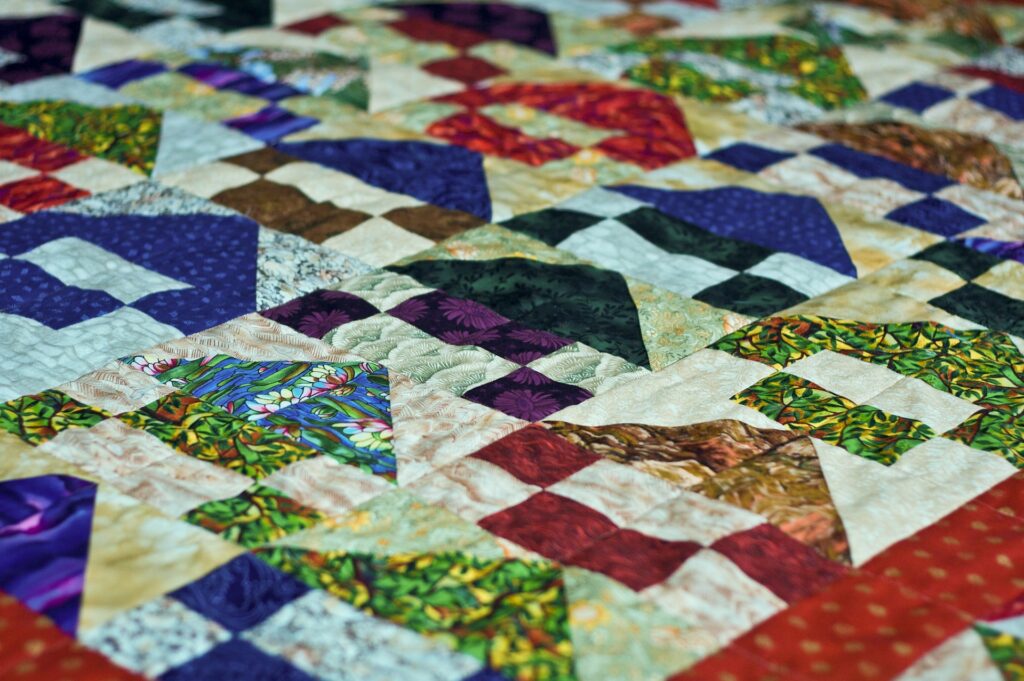There is no real answer to the question, “How big does a quilt have to be to make ?” With a little creativity and a few extra yards of fabric we can make anything work. Every project is different. Send me a message to discuss your quilt and what you want done with it!
Respect the Textile
I am often asked how I can bear to take a pair of shears to a fine vintage textile. As if by transforming it I am somehow degrading it. The question is legitimate, though, as we have all seen some questionable creations made from truly special fabrics.
It would be a travesty to cut up a beautiful, well-aged quilt and make a trendy, fast-fashion garment with it. It should be a crime to sacrifice a vintage textile and make something poorly constructed from it.
In my practice, I strive to sew items that elevate the fabrics in every way. I carefully plan where the patterns will fall in the finished garment, maximizing the best features of the textile while dodging any flaws or undesirable “marks of character.” Seams are all bound off with bias tapes, frenched, double-turned, or flat-felled; you will not find any raw edges or overlocker (serged) seams.
After the primary garment is cut from a textile, I process the offcuts into smaller and smaller items, until every last scrap is used up. A single quilt can yield a coat, or a hoodie and pants, or two smaller jackets, plus several handbags/fanny packs or hats, a handful of coasters or can coozies, and a half dozen dog collars. To waste the original textile would be disrespectful.
I hope that the items I make from repurposed textiles will be appreciated and celebrated by their new owners. I respect these textiles by making finely crafted heirloom-quality garments that will last for generations to come.
Second Hand Goods
Nearly all of the materials I work with are acquired from second-hand sources. I curate my stash by shopping in thrift stores, flea markets, estate and yard sales, and online marketplaces. Even my “notions” -that’s all the little finishing touches like thread, bias tape, zippers, buttons, etc. – are sourced like this.
I think it is important to use what we have before manufacturing new. Using second-hand materials brings character and a sense of timelessness to my work, while also being environmentally conscious.
My Beloved Alberta
The vast majority of my work is completed on an ancient Singer 201-2 named Alberta, after the woman who graciously gifted it to me. 201s are widely regarded as the finest straight stitch sewing machine ever made. Despite that, it has long been a tradition to give these old 201s away, as they are not valuable in terms of money. The value in these machines is in their performance, reliability, and versatility. There is nothing like them being made today.
I have a stable of other, newer machines that mostly collect dust. I might need them for complex stitch patterns from time to time, or to sew stretchy seams in knitwear, but aside from those rare instances, my go-to is my Singer 201. It handles leather as easily as it handles silk with just a few adjustments to thread tension and presser foot pressure.
When the original motor finally died out, I sent it to a machine shop where they completely rebuilt it. They rewrapped the copper coils and replaced all of the wiring. It was functionally a new motor, and should give Alberta another 80 years of working life to enjoy.




